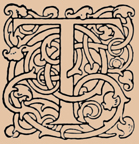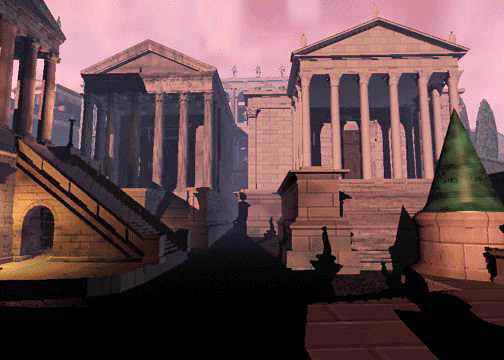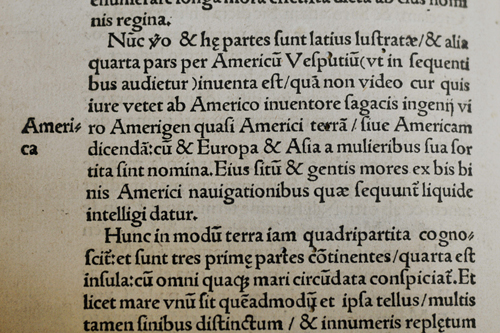
"But in the arrangement of my material I have adopted the same haphazard order that I had previously followed in collecting it. For whenever I had taken in hand any Greek or Latin book, or had heard anything worth remembering, I used to jot down whatever took my fancy, of any and every kind, without any definite plan or order; and such notes I would lay away as an aid to my memory, like a kind of literary storehouse, so that when the need arose of a word or a subject which I chanced for the moment to have forgotten, and the books from which I had taken it were not at hand, I could readily find and produce it."
Aulus Gellius, Noctes Atticae ("Attic Nights"), Preface
 hese essays are
personal and idiosyncratic. They therefore tend to meander,
with links in the text elaborating on other related topics. The advantage is that one can read
them at varying levels of detail; the
disadvantage is that, in overlooking a linked term, one easily can miss an additional two or three (or more) essays nested deeper within
the broader discussion. Too, as links within one lead to another and then another still, there is an increasing tendency to stray
from the original subject. The most indulged degree of separation is an essay on aconite poisoning that ends with a discussion of
C. cedonulli. There are essays on the pearls of Cleopatra and red mullets,
lead poisoning and tulip mania, Nero as the Antichrist and the Amazon types of
Ephesus, Caesar's giraffe and conchylomania. But nothing on
Roman politics or economics.
hese essays are
personal and idiosyncratic. They therefore tend to meander,
with links in the text elaborating on other related topics. The advantage is that one can read
them at varying levels of detail; the
disadvantage is that, in overlooking a linked term, one easily can miss an additional two or three (or more) essays nested deeper within
the broader discussion. Too, as links within one lead to another and then another still, there is an increasing tendency to stray
from the original subject. The most indulged degree of separation is an essay on aconite poisoning that ends with a discussion of
C. cedonulli. There are essays on the pearls of Cleopatra and red mullets,
lead poisoning and tulip mania, Nero as the Antichrist and the Amazon types of
Ephesus, Caesar's giraffe and conchylomania. But nothing on
Roman politics or economics.
When a subject is discussed more than once—for example, the Arch of Claudius, which is mentioned both in Roman Britain and the Aqua Virgo—the reader should remember to click on the link at the top of the page to return to the main essay and on the back button for the previous page. There also are links at the bottom of some pages to other essays of similar interest. All this, no doubt, is rather clumsy when frames would have made for a more elegant interface. One the other hand, there is the pleasing anachronism of having to scroll (like the ancients) through the content.
The Encyclopaedia Romana first was posted on April 17, 1997 and, in one way or another, is revised almost weekly. There is a discussion of the Roman province of Britannia which, in an excursus, extends to the Norman period, as well as essays on Greek architecture, courtesans, the end of paganism, some tentative essays on the Viking Age and fewer still on Byzantium.
I am not a classicist and long ago have forgotten my high-school Latin, but I do read the primary sources in their most accurate translations and compare authoritative secondary sources before presuming to make any statement of my own. Students of the literature are commended to do the same. To be sure, not everything presented on the Web is accurate, but some persistent statements are patently wrong. For example, the life of Alexander the Great was not saved by his dog Peritas; the Marble Cone is not one of the world's most deadly animals; no quotations can be attributed to Hypatia; Mehmed II did not break the jaw of the Serpent Column; and Hippocrates did not describe lead colic as an occupational disease.
Typographical and overlooked spelling errors are a continuing mortification and, although I would like to blame the amanuensis or cats on the keyboard for what mistakes there are, they sadly remain my own. To my chagrin, I also am aware that only works in English have been read, which should make it clear that these essays cannot presume to be original or exhaustive. If the number of quotations seem excessive (especially in later essays), it is because too many books lack them altogether or do not cite their primary source, blithely depending upon a secondary one. Too, as Aulus Gellius desired an aide-mémoire, so the Encyclopaedia is for me.
Finally, there is the hope shared with the translators of the King James Bible (1611, Preface) that I not "weary the unlearned, who need not know so much, and trouble the learned, who know it already."
But perhaps Jane Austen says it better still when, in recording the life of Henry VIII in her History of England from the reign of Henry the 4th to the death of Charles the 1st, written when she was fifteen, she relates "It would be an affront to my Readers were I to suppose that they were not as well acquainted with the particulars of this King's reign as I am myself. It will therefore be saving them the task of reading again what they have read before, & myself the trouble of writing what I do not perfectly recollect, by giving only a slight sketch of the principal Events which marked his reign."
Herodotus, in speaking of the Persians, provides another precept: "It is also their general practice to deliberate upon affairs of weight when they are drunk; and then on the morrow, when they are sober" (Histories, I.133, trans. Rawlinson). It is surprisingly sage editorial advice, although more efficacious if the two states of consciousness are reversed (as has been the case in the construction of this brief paragraph).
It has been seven years now since the Encyclopaedia Romana first appeared and, because I sometimes am asked about it and my qualifications as author, I thought on this, its septennial day, I would say something about both.
The genesis derived from having played SPQR (an acronym for Senatus Populusque Romanus, "The Senate and People of Rome"), an online game set in the Roman Forum in AD 205. The early emphasis in the Encyclopaedia on architecture and the imperial forums was prompted by a desire to better understand that time and place.
SPQR still can be played at Ancientsites.com (at least, the first chapter) and very satisfying it is, as this screen shot attests. (The Aerarium beneath the steps of the Temple of Saturn is highlighted because that is where the final clue is to be found.)

I have a master's degree in English from the University of North Carolina at Chapel Hill and am on the faculty at the University of California, San Francisco. But it is my library privilege at the Berkeley campus, where seemingly no book or journal cannot be found, that has made this work possible. The fourth largest academic library in the country, it is a staggering collection.
Justin, in his epitome of Pompeius Trogus, proclaims to have extracted only what "was most worthy of being known; and, rejecting such parts as were neither attractive for the pleasure of reading, nor necessary by way of example, have formed, as it were, a small collection of flowers, that those who are acquainted with the history of Greece might have something to refresh their memories, and those who are strangers to it something for their instruction" (Preface, IV).
In these selected essays on the history and culture of Rome, I hope that my own florilegium is found to be as enjoyable.
April 2004
In anticipation of my retirement from UCSF, the Encyclopaedia moved to the University of Chicago on August 16, 2005, a transition (my fourth) facilitated by Bill Thayer and James Eason that is gratefully acknowledged. In its earlier incarnations, the Encyclopaedia had links, now long dead but still occasionally cited, at
Ancientsites.com (http://www.ancientsites.com/as/er/encyclopaedia_romana.html)
University of Guelph (http://langmuir.physics.uoguelph.ca/~aelius/encyclopaedia_romana.html)
University of California, San Francisco (http://itsa.ucsf.edu/~snlrc/encyclopaedia_romana)
I now have come to the decennial anniversary of the Encyclopaedia Romana, in celebration of which Rome was revisited (as were Sicily and Greece). Taken with a digital camera, the pictures now are larger (6 x 4 inches) and displayed at a higher resolution.
And yet, as new areas of interest are explored, there has been less enthusiasm about maintaining the Bibliography and Index, both of which have been allowed to languish. Individual topics can more readily be discovered by searching Google, and there seems no point in repeating the references at the end of each essay.
April 2007
Another septennial anniversary (and a celebratory visit to Crete and Turkey). Fewer essays now are being written but those that are have more detail and certainly a greater number of citations. They are, to my mind, the better ones and include (as well as those cited above) discussions of Hypatia and her death, Charles Townley and the Clytie, Sol Invictus and Christmas, the Great Library of Alexandria and its daughter library in the Serapeum, the Pharos, and most incongruously, Luftwaffe paint schemes.
April 2014
The Encyclopaedia celebrates its Vigintennial. Retired now for more than a decade and increasingly less inclined to make the long drive to the Berkeley campus, I am writing fewer new essays and instead pay more attention to editing and revising those already written.
April 2017
A continuing revision of the old rather than anything new, the most satisfying having been when Jesus died, and the tiger and elephant in the medieval bestiary.
April 2018
The plague year and, with no access to the UCB libraries, there have been more revisions, including a long rewrite of Viking ships, especially the Long Serpent and Gokstad, as well as elaborations on Byrhtnoth at Ely Cathedral, Olaf at London Bridge, the Temples of Artemis at Didyma and Magnesia, Samian ware pottery, Under the Yoke, Jennings Dog, and the EID MAR coin issue.
April 2020
The quadranscentennial anniversary of the Encyclopædia, in which there have been further revisions (garum and wine vintages, for example) and a discussion of Bf 110 paint schemes. More importantly, the construction of the pages themselves has been changed. Originally, I had assumed that they would be viewed on a desktop monitor, not appreciating that now, a quarter of a century later, resolution has increased and almost half of these essays are seen on a mobile device. The 12-pt text intended for printing now is far too small to be legible on an iPhone. Consequently, and with some chagrin for not having anticipated the need, I have begun to increase font sizes to 16 pt for New York Times and 14 pt for Verdana (articles on the Luftwaffe)—which is appropriate for a mobile device but perhaps too large to be read on a laptop or desktop computer. The illustrations also have been centered, rather than being nested in the text, which also has made the constructions look basic indeed but the accompanying text at least can be read more easily.
Another year has passed, both for the author and his work. More revisions of existing essays—and the anticipation of a long visit to classical sites around the Mediterranean.
April 2023
I invite you to write to me—James Grout—at the following address, which is presented as an image to discourage it being exploited by spammers, the bane of any email account:
![]()
The pseudonym was used when I played SPQR and is that of Lucius Aelius Stilo Praeconinus (c. 154–74 BC), the first Roman philologist. An antiquarian, grammarian, Stoic, and the teacher of Varro and Cicero, his cognomen Stilo (stilus, "pen") is a reminder of the orations he wrote for others. Praeconinus derives from his father's occupation as a public crier (praeco).
 The selection button is a silver denarius
issued by Marcus Junius Brutus in 42 BC to commemorate the assassination of Caesar on the Ides of March, 44 BC.
The selection button is a silver denarius
issued by Marcus Junius Brutus in 42 BC to commemorate the assassination of Caesar on the Ides of March, 44 BC.

"But now these parts have been extensively explored and a fourth part has been discovered by Americus Vespuccius, as will be seen in the appendix: I do not see what right any one would have to object to calling this part after Americus, who discovered it and who is a man of intelligence, Amerige, that is, the Land of Americus, or America: since both Europa and Asia got their names from women."
Martin Waldseemüller and Matthias Ringman, Cosmographiae Introductio (XXX)
The picture (top) is the Humanist Library in the Alsatian town of Sélestat. Founded in 1452, it is one of the few European libraries from the Renaissance to have remained intact. The collection of incunabula and manuscripts comprises both the original library of the Latin School there and the personal library of its most famous pupil, the humanist Beatus Rhenanus.
It also possesses a copy of Cosmographiae Introductio, the introduction to a revised edition of Ptolemy by Martin Waldseemüller and Matthias Ringman, who had moved to the nearby town of Saint Dié. Published in 1507, it marks the first time that the word "America" appeared in print. The book accompanied Universalis Cosmographia, a monumental map of the world drawn that year by Waldseemüller, which also records America as the name of what Vespucci recognized to be a newly discovered world. Only a single copy survives, discovered in 1901 and purchased by the United States a century later. It now is on permanent display in the Library of Congress.